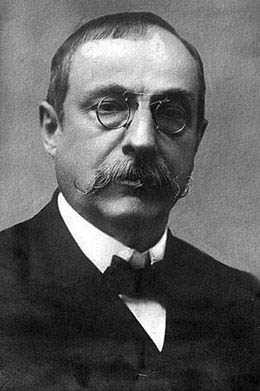José María Ramos Mejía facts for kids
Quick facts for kids
|
|
|---|---|
 |
|
| Born | 1849 Buenos Aires, Argentina |
| Died | 1914 Buenos Aires |
| Language | Spanish |
| Alma mater | University of Buenos Aires |
| Literary movement | Positivism |
| Notable works | Rosas y su tiempo |
José María Ramos Mejía (born in 1849, died in 1914) was an important Argentine politician and historian. He was known for his unique ideas about how to study history and for his work in medicine.
About José María Ramos Mejía
José María Ramos Mejía was born in Buenos Aires, Argentina, in 1849. His father was Colonel Matías Ramos Mejía. José María studied medicine and worked to improve how doctors were trained. He pushed for changes in academic standards starting in 1871. These changes were put into place between 1873 and 1880. He finished his medical studies in 1879. His final paper was about brain trauma, which means injuries to the brain.
After graduating, he continued to work at the University of Buenos Aires. In 1887, he became the head of a new department that studied nerve diseases. He did a lot of research on nerve and mental health problems. Because of his work, he is seen as one of the first researchers in psychiatry in Argentina. Psychiatry is the study and treatment of mental illness.
José María also held many important public jobs. In 1882, he was the vice president of the Buenos Aires city council. The next year, in 1883, he became the first director of public assistance. From 1888 to 1892, he served as a national deputy, which is like a member of parliament. He also led the National Department of Hygiene from 1893 to 1899. Later, he became the president of the National Council of Education. He passed away in 1914.
His Work as a Historian
José María Ramos Mejía started writing his first book, "Neurosis de los hombres célebres en la historia argentina" (which means Neurosis of noteworthy men in the history of Argentina), while he was still a student. He published it in 1887. His ideas were influenced by another historian, Vicente Fidel López. In turn, José María's work influenced later historians like José Ingenieros and Luis Agote.
As a historian, José María had a different way of looking at the past. Most historians at the time focused on famous leaders or important people. But José María believed it was more important to study the social groups that helped these famous people become important. He thought that big events in history were shaped by the feelings and actions of many people, not just a few.
For example, he saw the Argentine War of Independence as a result of people who were very passionate and romantic. He thought the Argentine Civil War happened because people were aggressive. And he believed his own time, around 1890, was shaped by people who were more passive.
He also used an idea called phrenology in his historical analysis. Phrenology was a way of trying to understand people's personalities by looking at the shape of their skulls. This was part of a new trend called positivism, which tried to combine history with science. However, today, phrenology is not considered a real science; it's known as a pseudo-science.
Books He Wrote
- Neurosis de los hombres célebres en la historia Argentina (1887)
- Las multitudes argentinas (1899)
- La locura en la historia. Contribución al estudio psicopatológico del fanatismo religioso y sus persecuciones (1895)
- Los simuladores del talento en las luchas por la personalidad y la vida (1904)
- Rosas y su tiempo (1907)
See also
 In Spanish: José María Ramos Mejía para niños
In Spanish: José María Ramos Mejía para niños

